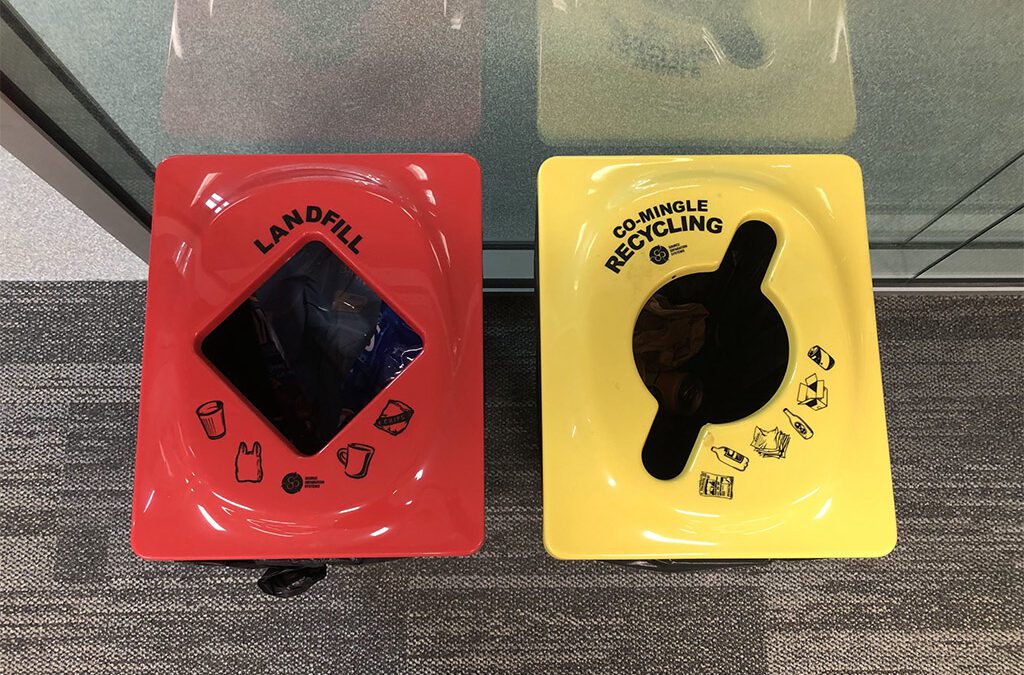Hot on the heals of criticism of its plastic recycling schemes, the Australian Packaging Covenant Organisation (APCO) has revisited its 2025 plastic reduction targets at a ‘Phase Out’ seminar.
APCO, which represent 1500 Australian businesses – including Coles and Woolworths who were involved in the RedCycle recycling controversy, has targets for 70% of plastic packaging to be recyclable by 2025. Its numbers have remained under 20% since 2018.
The APCO numbers reflect Australia’s larger plastic recycling crisis. According to the National Waste Report 2022 87% of plastic ends up in landfill.
Professor Geoff Spinks, Head of the Faculty of Engineering and Information Sciences at the University of Wollongong (UOW), said the plastics data of the past decade is not a shock as the economic factors are the biggest obstacle in plastic recycling.
“It’s all driven by the cost, the economics. So when asking why we don’t have circularity in our plastics industry, it simply comes down to cost,” he said.
Professor Spinks used the example of recycling a milk bottle, after calculating the cost of plastic in a milk bottle to be six cents.
“You’ve got to collect waste milk bottles, bring them to a centre, wash them, grind them, dry them, package them and send them to a bottle plant for less than six cents. It’s just not economically viable to do that,” he said.
“It’s a bit distressing, isn’t it?”
Despite calling it a ‘fraught area’ Professor Spinks is hopeful the conversations around developing additional recycling facilities will be able to put the industry back on track.
Dr Aziz Ahmed, Lecturer in Structural Engineering at UOW has joined a team of global researchers from the University of Texas and Western Sydney to design another solution.
Dr Ahmed is the lead on the CSIRO and US National Science Foundation funded project ‘Designing for Circular Economics: Creating Impact from Local Plastic Waste Using Off-Grid Containerised 3D Printers and Practice Based Learning.’
The expert’s solution is to utilise community 3D printers that recycle plastics and will avoid the high running costs of larger recycling plants.
“It’s making it accessible, we are calling it the democratisation of plastic recycling. Currently, the companies [in plastic recycling] are very capital intensive… the whole process is so costly,” he said.
Setting themselves apart from Australia’s current 10c return and earn set-ups, the design is compatible with a larger array of plastic ‘waste’ and the incentive is to receive reward tokens to cash in to create recycled plastic products.
Toys, plant pots, small pieces of furniture and even replacement parts to fit existing household items are some of the products the community can create and customise.
“Why not turn it [single-use plastics] into something that people are going to use for ten years, and can recycle back for another ten years. If you recycle it five times, you are gaining at least 50 years of value as opposed to minutes. That’s the benefit of this technology,” Dr Ahmed said.
With the pitch for the design due in October, the team hopes to commercialise the product for public use within three years.
Professor Spinks echoed the hopes of Dr Ahmed and said that if the community-centred approach can remove the usual costs involved in plastic recycling, it has strong potential.
“If you’ve got a community facility where people can donate their plastics and they get some sort of benefit…then maybe that could work and could make an impact on the waste plastic that we’re currently throwing away.”
The infographic below provides insight into Australia’s plastic waste problem.

